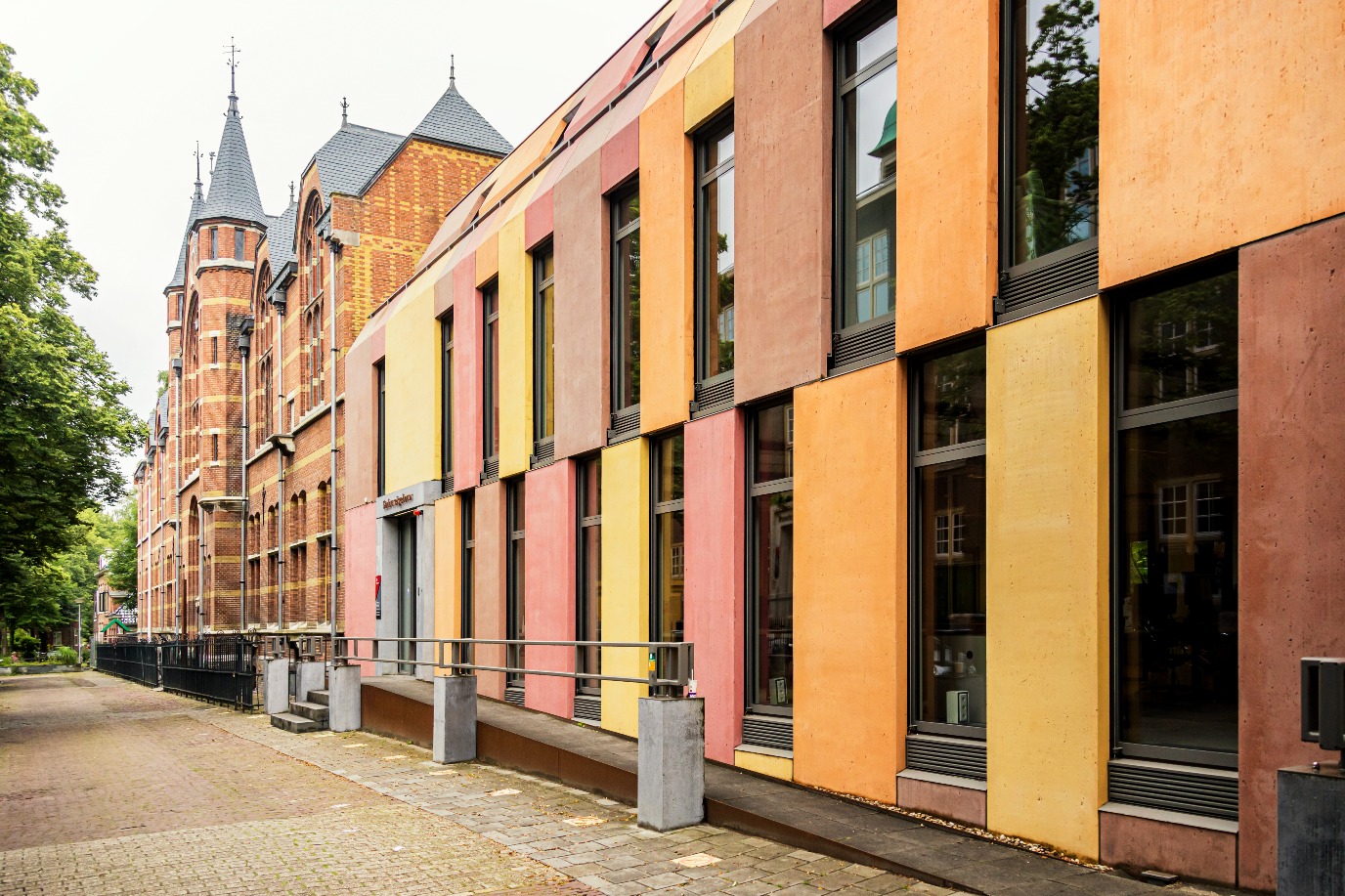UG Buildings: the Grote Rozenstraat
The University of Groningen as we know it now is more than the Academy Building alone. In this series, based on the podwalk and the booklet In het spoor van de Academie (in Dutch only), we are putting a spotlight on various buildings—and a work of art—of the UG and their histories. In this episode: the Grote Rozenstraat.
Grote Rozenstraat is the ‘GMW street’ par excellence, as many buildings of the Faculty of Behavioural and Social Sciences stand on either side. Especially on the northern side, there is a cluster of linked old and new buildings forming a complex together. They bear the names of luminaries from the University’s past.

Number 3: Van Gelder Building
This building is named after Leon van Gelder, one of the founders of educational science. He is known for the Middle School Experiment (Middenschool experiment) carried out in the 1970s.
Number 15/ 17: Snijders Building
This building was named after the psychologist Jan Snijders. Number 17 used to house the Laboratorium Chemicum in 1814, which later moved to Bloemsingel. According to the gable stone, the Pharmaceutical Laboratory from 1880 stood next door, roughly on the spot where Munting’s house, the founder of the Hortus, was located in 1626.
Number 19: Gadourek Building
This building was named after Czech-Dutch sociologist Ivan Gadourek. Together with the adjacent buildings, this forms the home of the Groningen sociologists.
Number 38: Nieuwenhuis Building
Across the street, i.e. on an even number (38), stands the Nieuwenhuis Building. This used to be the home of the Christian HBS, which later became the secondary school Wessel Gansfort College. It was home to the Institute of History in the 1980s, but now houses educationalists. Hendrik Nieuwenhuis was Groningen's first Professor of Pedagogy.
Behind the Nieuwenhuis building you will find a state-of-the-art ambulatory, a type of laboratory that is set up as a living room where children can be observed for research purposes. A camera records them while they are playing.
Number 31 Bouman Building
Its namesake is the historian-sociologist Pieter Jan Bouman, known for, among other things, the 1953 international bestseller Revolution of the Lonely : a historical account based on individual stories. As can be read on the façade, this building used to be the Botanical Laboratory, completed in 1899.
Want to find out more?
Check our overview page for the editions on the Academy Building, the Ubbo Emmius monument, the University Library, the Röling Building, the former Laboratory for Hygiene, the former Astronomy Laboratory, the Institute of Archaeology, the House with the 13 Temples, the Old Courthouse, the Main Administrative Building and the Faculty of Philosophy.
Are you interested in the buildings and history of the UG? You can download the podwalk ‘In the footsteps of the Academy’ for free. Go to the App Store (Apple) or Google Play (Android) and search for ‘Op stap met Aletta’. At the I-shop (University Shop), the walking guide In het spoor van de Academie (Dutch only) is available for €9.95: www.rug.nl/winkel.
More news
-
15 September 2025
Successful visit to the UG by Rector of Institut Teknologi Bandung
